Curated Guides > Thematic Series > ARCHES (At-Risk Cultural Heritage Series)
ARCHES (At-Risk Cultural Heritage Series)
This thematic series explores endangered cultural heritage around the world. The continuous nature of the problem of endangered and destroyed cultural heritage, and the fact that it is not limited to far-away countries in political disarray, underscores the importance of educating students about historical examples and the legal frameworks that exist to protect important works and sites.
Is our history in danger? Every day important cultural objects are lost forever.
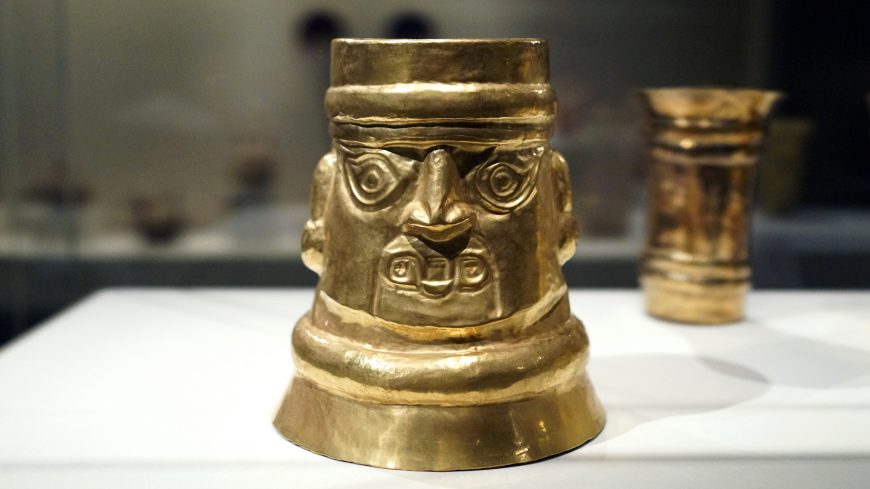
Inverse-Face Beaker, 10th–11th century, Sicán (Lambayeque), Peru, gold, 20 x 18.1 cm (The Metropolitan Museum of Art)
Art is taken in war as a symbol of victory, but even during times of peace, art can represent the wealth and sophistication of the nation that controls it, or of its private owner.
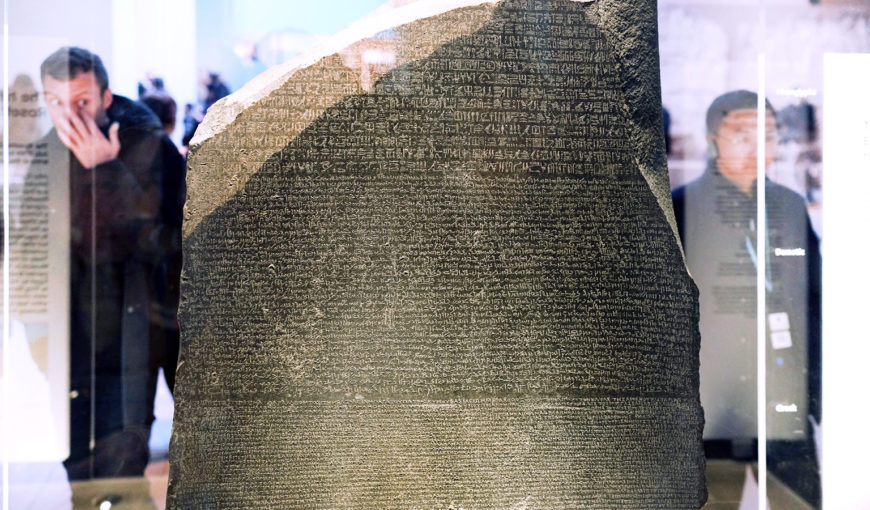
Visitors view the Rosetta Stone in the British Museum (photo: Dr. Steven Zucker, CC BY-NC-SA 2.0)
- Repatriating artworks
- From tomb to museum: the story of the Sarpedon Krater
- Who owns the Parthenon sculptures?
- Plunder, war, Napoleon and the Horses of San Marco
- Paikea at the American Museum of Natural History
- Nazi looting: Egon Schiele’s Portrait of Wally
- Seizure of Looted Antiquities Illuminates What Museums Want Hidden
- Looting, collecting, and exhibiting: the Bubon bronzes
- Napoleon’s appropriation of Italian cultural treasures
- Napoleon's booty — Perugino's (gorgeous) Decemviri Altarpiece
What can ruins tell us, and what should we do with them?
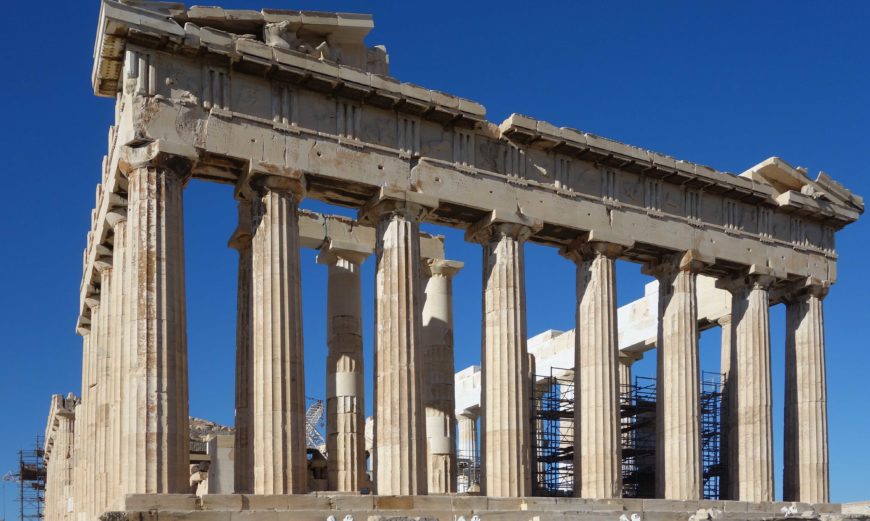
Iktinos and Kallikrates, The Parthenon, 447–432 B.C.E., Athens (photo: Steven Zucker, CC BY-NC-SA 2.0)
- Destruction, Memory, and Monuments: The Many Lives of the Parthenon
- Views of past and present: the Forum Romanum and archaeological context
- The Roman Forum: Part 1
- The Roman Forum: Part 2
- The Roman Forum: Part 3
- Rome’s layered history — the Castel Sant’Angelo
- Looted and revered: The Rosetta Stone
- Ruin as abattoir, the Colosseum
- Before the fire: Notre Dame, Paris
- Conservation as memorial, Mantegna and the Ovetari Chapel
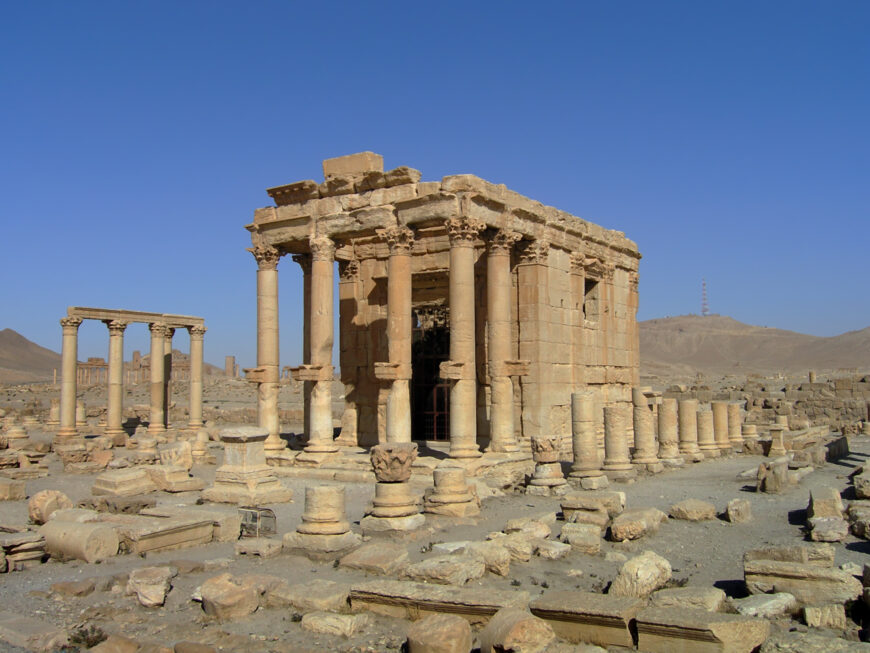
View of the porch with free-standing columns, and a pilaster visible on the flank, Temple of Baalshamin, 1st century C.E. (Palmyra—in modern Syria) (photo: Juan Llanos, CC BY-ND 2.0)
- Palmyra: the modern destruction of an ancient city
- Ancient Babylon: excavations, restorations and modern tourism
- Venice’s San Marco, a mosaic of spiritual treasure
- Renaissance Synagogues of Venice
- Unearthing the Aztec past, the destruction of the Templo Mayor
- Bayt Farhi, a Jewish house in Damascus
- Unearthing New York’s history of slavery
- Seneca Village: the lost history of African Americans in New York
- Ceremonial belt (Kwakwaka’wakw)
- Voyage to the moai of Rapa Nui (Easter Island)
- The Gwoździec synagogue: the lost art of painted wooden synagogues
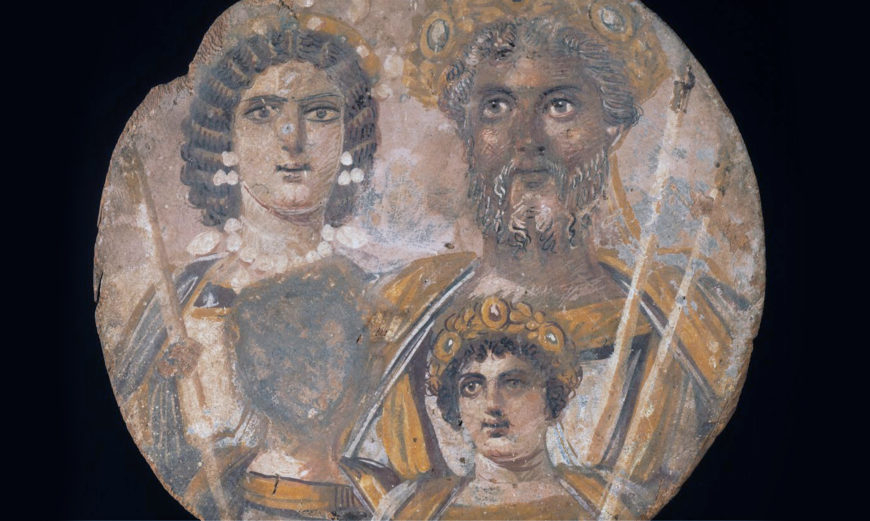
The Severan Tondo, c. 200 C.E., 30.5 cm, tempera on wood (Altes Museum, Staatliche Museen, Berlin)
- Erased from memory: the Severan Tondo
- Rewriting history: damnatio memoriae in ancient Rome
- Byzantine Iconoclasm and the Triumph of Orthodoxy
- Making and Mutilating Manuscripts of the Shahnama
- Folio from a Shahnama, The Bier of Iskandar (Alexander the Great)
- The Court of Gayumars—part 1
- The Court of Gayumars—part 2
- Iconoclasm in the Netherlands in the 16th century
- Submerged, burned, and scattered: celebrating the destruction of objects in South Asia
- Creative iconoclasm: a tale of two monasteries
- Erasing Art: Rauschenberg’s Erased de Kooning drawing
- Destruction as Preservation: Ai Weiwei’s Dropping a Han Dynasty Urn
Major threats to cultural heritage come in two forms: destruction during military conflict and the looting of sites and collections. Both in antiquity and in contemporary times, we often see these destructive activities going hand in hand, but we also see a greater recognition that cultural remains should be protected.
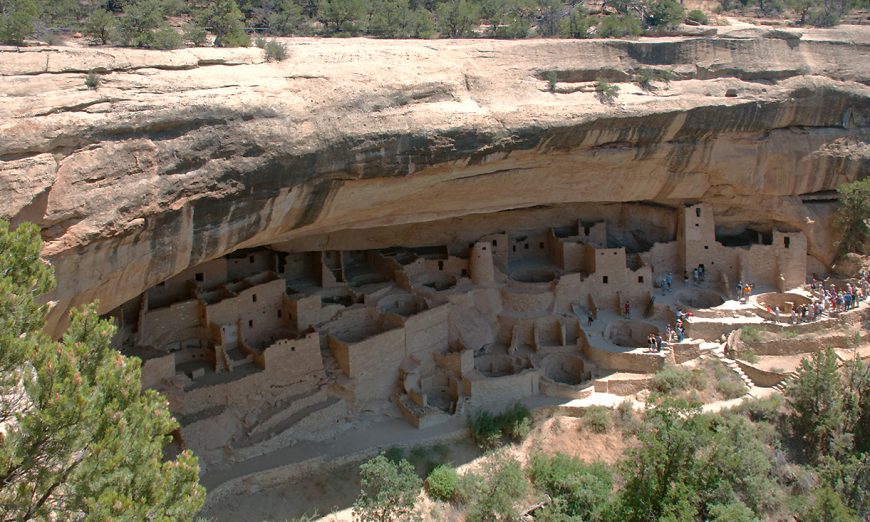
Cliff Palace, Ancestral Puebloan, 450–1300 C.E., sandstone, Mesa Verde National Park, Colorado (photo: Steven Zucker, CC BY-NC-SA 2.0)
- Mesa Verde and the preservation of Ancestral Puebloan heritage
- A market for looted antiquities
- Save culture – end trafficking
- Trafficking the past
- We will need Monuments Men for as long as ancient sites remain battlefields
- What the bulldozers left behind: reclaiming Sicán’s past
- Lost History: the terracotta sculpture of Djenné-Djenno
- The Looting of Cambodian Antiquities
- Sotheby’s Returns Looted 10th Century Statue to Cambodia
- The Scourge of Looting: Trafficking Antiquities from Temple to Museum
- How a famous Greek bronze ended up in the Vatican
- Fact and fiction: The explosion of Reims Cathedral during World War I
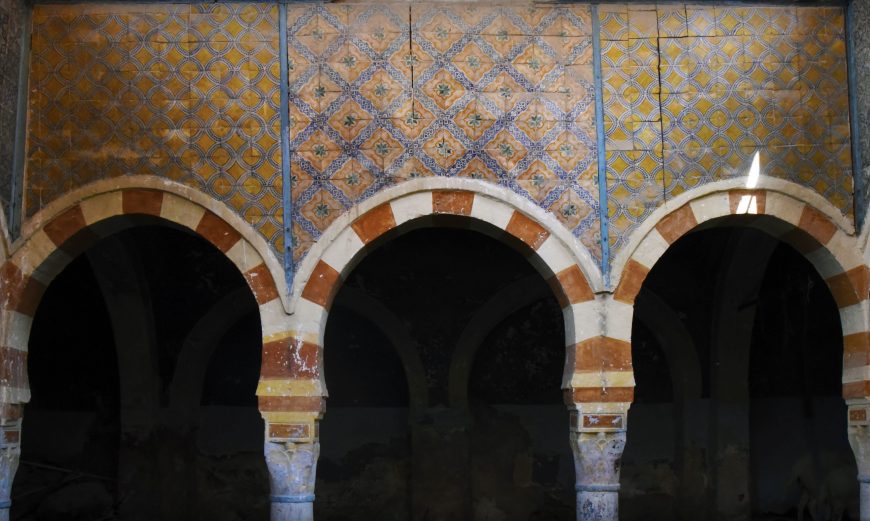
Synagogue, Gafsa, Tunisia (photo: courtesy of Chrystie Sherman)
- Diarna: documenting the places of a vanishing Jewish history
- A Landmark Decision: Penn Station, Grand Central, and the architectural heritage of NYC
- Frameworks for cultural heritage protection: from ancient writing to modern law
- A race against time: manuscripts and digital preservation
- Provenance and the Antiquities Market
- A Renaissance masterpiece nearly lost in war: Piero della Francesca, The Resurrection
- Saving Torcello, an ancient church in the Venetian Lagoon
Archaeologists dig to reveal the past. They meticulously preserve information that pieces together human history, but they also make choices about which histories they focus on in the sites they excavate. In contrast, looters dig for treasure and destroy context. But what about the collections that pre-date modern archaeology—the objects that have no recorded findspot—where the only real evidence we have comes from the object itself?

Discarded pots from a looting episode at the Early Bronze Age cemetery at Fifa, Jordan, photo: Austin C. Hill, courtesy of the Follow the Pots Project (with permission)
- What is archaeology: understanding the archaeological record
- Underwater archaeology and the Antikythera Shipwreck
- Saved by shipwreck, The Antikythera Youth
- The rediscovery of Pompeii and the other cities of Vesuvius
- The importance of the archaeological findspot: The Lullingstone Busts
- When there is no archaeological record: Portrait Bust of a Flavian Woman (Fonseca bust)
- Conservation vs. restoration: the Palace at Knossos (Crete)
From the ancient cities of Babylon and Palmyra to the tourist mecca of Venice, cultural heritage is endangered by forces such as rising sea levels, cruise tourism, and radical jihadists.
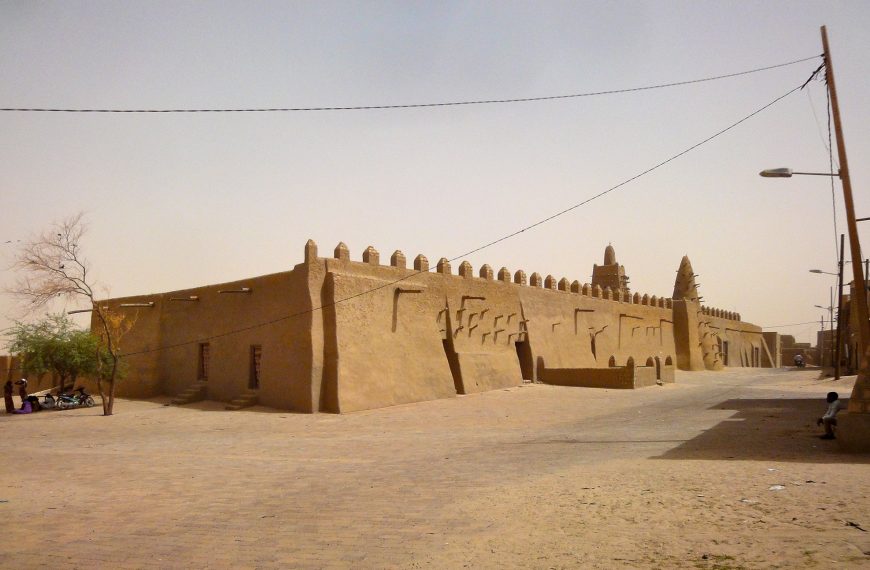
Djingareyber Mosque, built 1327, Timbuktu, Mali. Two tombs at this mosque were attacked by Islamic extremists in 2012. (photo: Johannes Zielcke, CC BY-NC-ND 2.0)
There are things each of us can do to protect cultural heritage. Learn how.
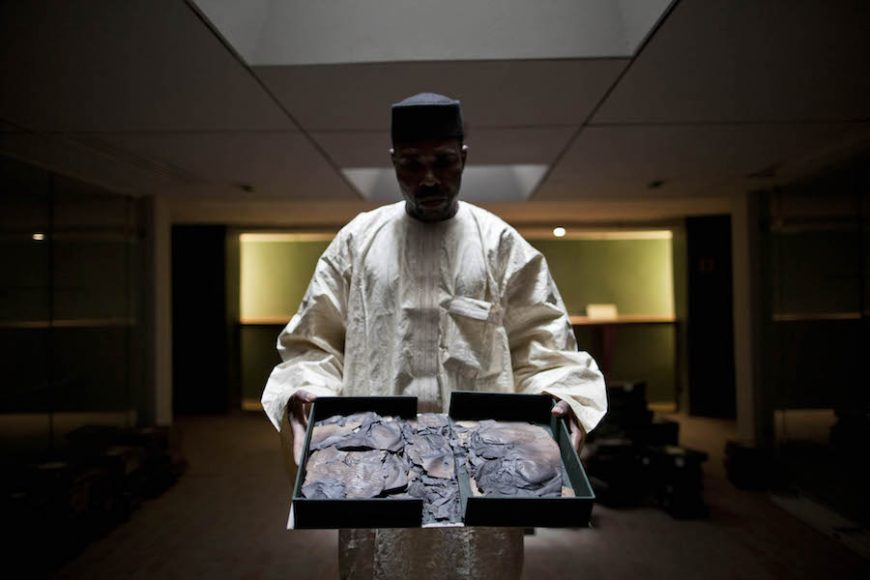
Deputy Director Abdoulaye Cisse shows a burnt manuscript at the Institut des Hautes Etudes et de Recherche Islamiques Ahmed Baba in Timbuktu, Mali, December 5, 2013 (photo: MINUSMA/Marco Dormino)
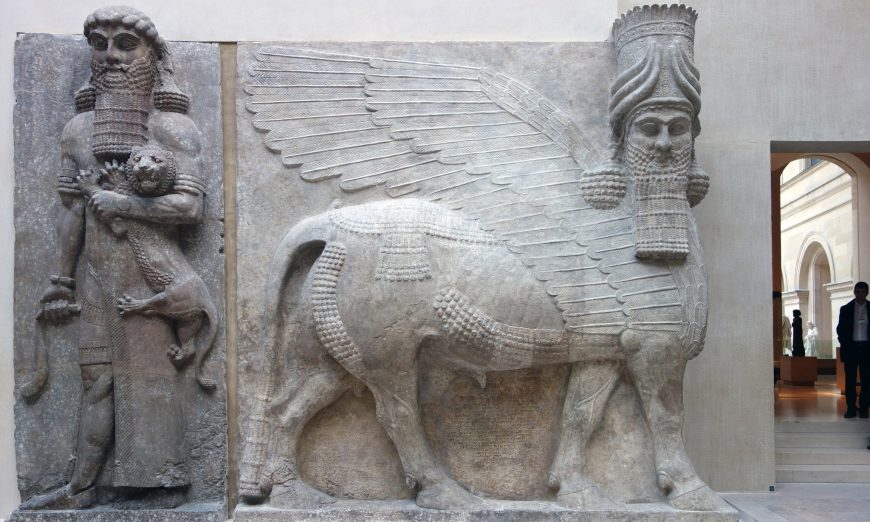
Lamassu (winged human-headed bulls possibly lamassu or shedu) from the citadel of Sargon II, Dur Sharrukin (now Khorsabad, Iraq), c. 720–705 B.C.E. (Neo-Assyrian), gypseous alabaster, 4.20 x 4.36 x 0.97 m (Musée du Louvre, Paris)
- Lamassu from the citadel of Sargon II
- Temple of Portunus, Rome
- Warka Vase
- Nasca Geoglyphs
- Cuneiform Tablets
- Rock-Art Sites of Tadrart Acacus (Libya)
- Benin plaque: Equestrian Oba and Attendants
- Capitoline Brutus
- The Great Pyramids of Giza
- Thutmose, Model Bust of Queen Nefertiti
- Otto Wagner, Postal Savings Bank
- Bamiyan Buddhas
- Aztec feathered headdress
- Great Mosque of Djenné (Djenné peoples)
- Mogao caves at Dunhuang
- Machu Picchu
- The Paracas Textile
- Leonardo, Last Supper
- The Taj Mahal
- Saint Trophime, Arles

 Open All
Open All Collapse All
Collapse All